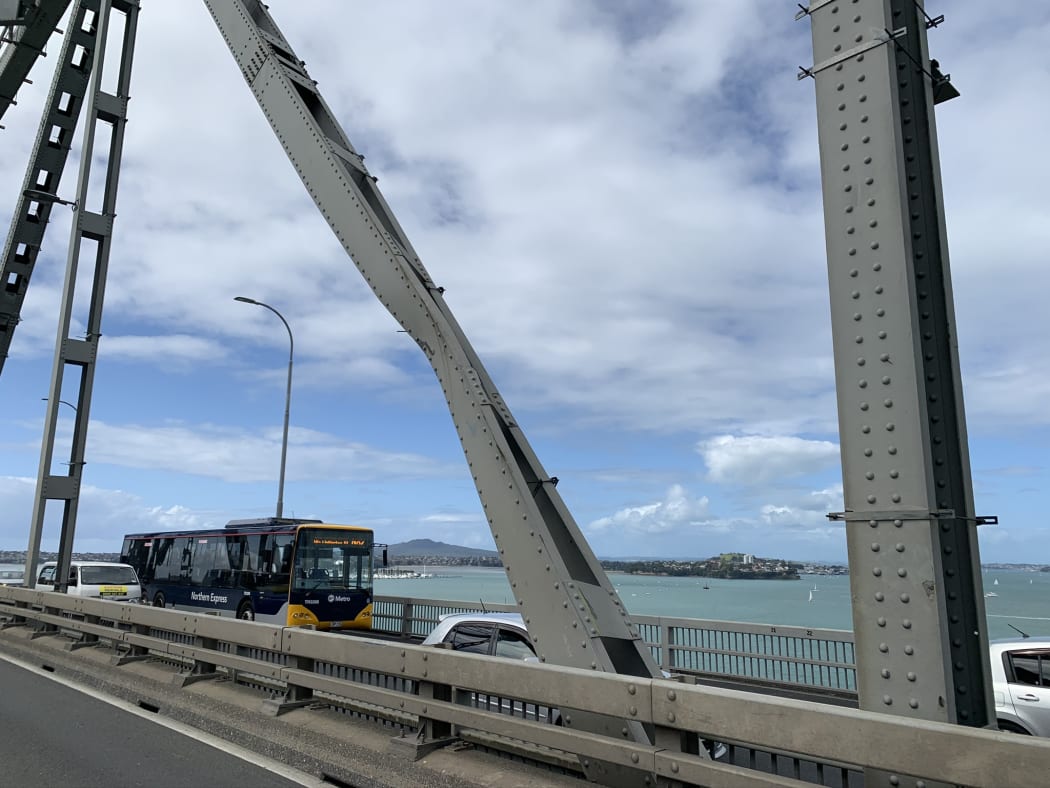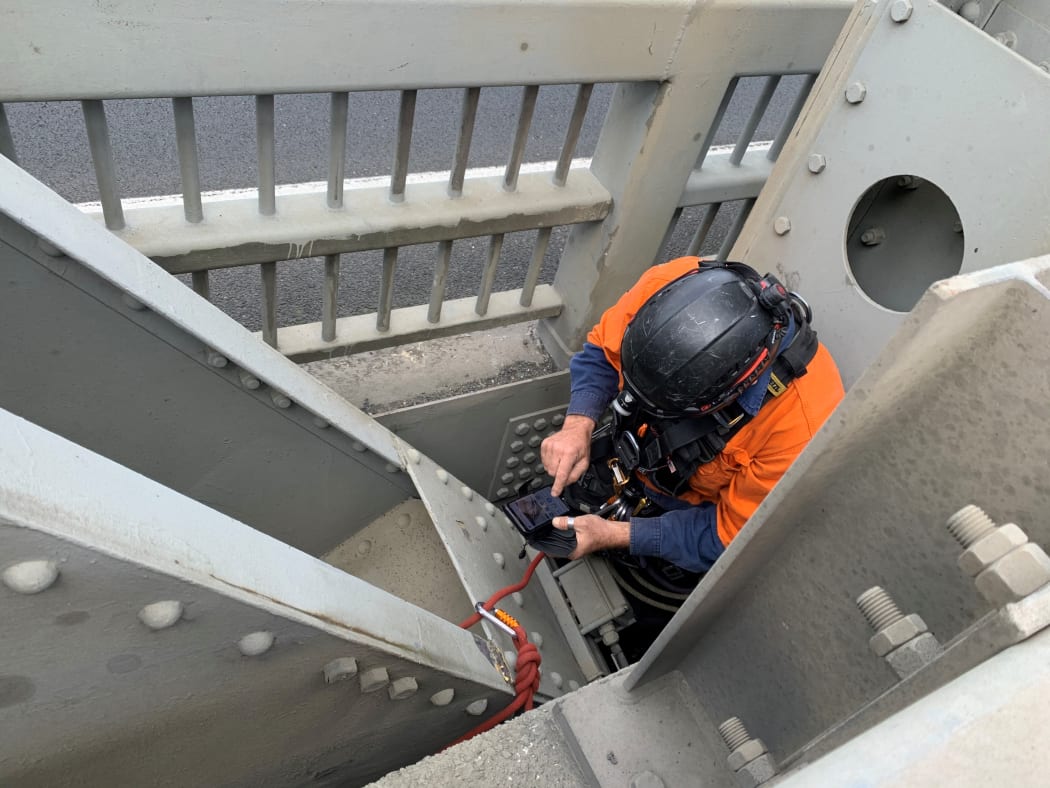
Damage on Auckland Harbour Bridge, 9 September Photo: RNZ / Eli Orzessek
Over the weekend, we saw what happens when an unstoppable (gale) force meets a moveable object.
It picks (that truck) up, slams it into a crucial beam in the Harbour Bridge, and shuts down half of the Auckland Harbour Bridge for a matter of weeks.
Cue angry motorists, hours-long commutes, and much head-scratching about how such scenarios can be avoided in the future.
Waka Kotahi, or the Transport Agency, says the bridge functioned exactly as it should have; this was a freak occurrence - 60 kilometre per hour winds intensifying to over 120 kilometres per hour for just three minutes. It's as close to an Act of God as you can get, something no amount of forward planning could for-see.
But try telling that to Joe Bloggs, stuck in traffic for three hours while travelling from Beach Haven to Mount Wellington yesterday morning.
On today's episode of The Detail, Emile Donovan speaks to Waka Kotahi's Brett Gliddon, the Auckland Chamber of Commerce's Michael Barnett, and Professor Alistair Woodward from Auckland University about the causes, cures, and lessons learned about commuter issues in New Zealand's biggest city.
Around 11am last Friday, a freak gust of wind picked up a truck and sent it careering into a vital load-bearing beam on the Auckland Harbour Bridge.

Taking photos of damage underneath the bridge. Photo: Eli Orzessek / RNZ
While to the untrained eye it appears bowed but not broken, under the surface the damage is done: a crucial part of the beam has been cleanly sheared off a plate under the level of the road and is no longer supporting anything.
This caused the middle two lanes of the bridge - which is crossed by more than 150,000 vehicles every day - to be closed off. While one or two lanes might be opened by this time next week, a permanent fix is much further off.
Waka Kotahi's general manager of transport services Brett Gliddon says a replacement beam will have to be designed, peer-reviewed, and then constructed - and while all that work can take place here in New Zealand, it's not a quick process.
While the accident was a freak occurrence, the Auckland Chamber of Commerce's chief executive Michael Barnett says it demonstrates a lack of converting forward planning into actual commitment to better infrastructure.
"When you look at the whole context of Auckland at the moment we had the power - when Auckland ran out of power; then you look at things like the growth of Auckland, 11 percent per annum but our housing’s been growing at five percent. Water – we’re running out of water despite the fact we knew that demand was increasing. And we’ve had congestion forever in Auckland – lots of words, but just a total lack of commitment, a lack of urgency about the whole thing."
Professor Alistair Woodward from the University of Auckland agrees with Barnett that the resulting traffic logjams showcase gaping vulnerabilities in Auckland's transport infrastructure - but he has different ideas as to how to deal with this.
That includes cutting down car numbers.
“We haven’t thought hard enough about the future. Everything is short term … you know it’s ‘bung on another lane, it’s widen the road, it’s put in a new road’.
“Of course all that does is to boost the amount of traffic. So it’s entirely predictable that if we spend squillions of dollars on a tunnel under the harbour for more roads, that they will full up rapidly as well and we’ll suffer all the environmental and social costs of living in a car-dominated city.”


